Managing Your First Year on the Road as a New Driver
Jack Dreyer | Wednesday 7th September 2022 8:00am
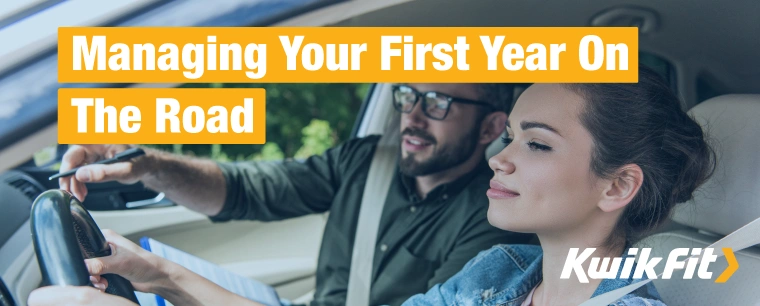
So youíve just passed your driving test? First of all, congratulations!
With the average pass rate standing at just 47%, thatís quite an achievement. No more relying on public transport and lifts from friends and family ó the roads are now yours to master.
If youíre feeling a little hesitation and angst amongst the excitement, thatís perfectly normal. With your pass certificate comes a range of new experiences and responsibilities, many of which youíre going to have to dive into in the first year of driving.
In another blog of ours, we covered crucial car maintenance know-how for your first year on the road, but we wanted to make sure we cover the more experiential elements of driving too.
Keep in mind that each of these experiences will get easier with time ó but it helps to have an understanding of how to approach them the very first time.
First time: Putting fuel in your car
This is likely one of the first driving experiences youíll have to encounter on your own. In our recent survey, more than 50% of those asked had to refuel within a week of passing their test.
Despite this being an important element of using a vehicle, they donít teach you how to refill a car in driving lessons! This unfamiliarity can lead to some stress when pulling up to the petrol station for the first time, with 21% of those surveyed finding the process stressful.
But donít let this worry you ó while it might initially seem daunting, youíll soon get used to the prospect of refuelling (though maybe not the prices!).
Hereís our advice:
At home before you leave
- Check which side of your carís fuel cap is on
- Check how it opens Ė you may need a key, or it will just pull open
- Check whether your car takes petrol (unleaded) or diesel Ė it may say it inside your fuel cap (otherwise, check your vehicleís handbook).
At the garage
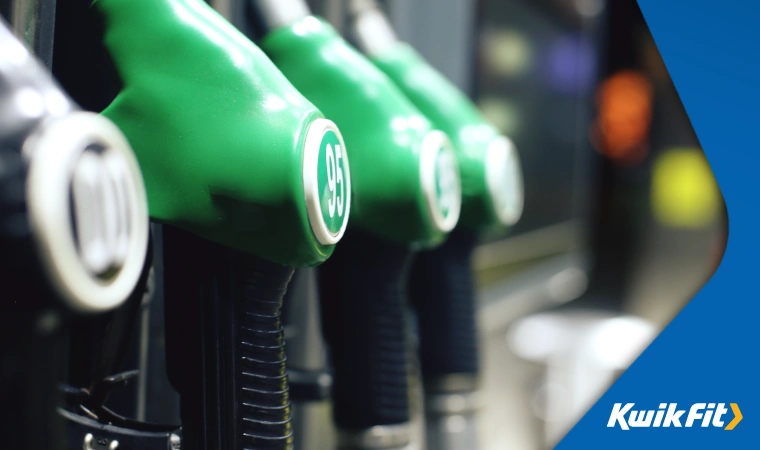
Most garages these days will have all kinds of fuel at every Ďstationí so you donít have to worry about which pump to pull up at.
Drive to a pump with your fuel cap facing the side of the pump. Be sure to leave yourself enough room to get between the car and the pump when you get out.
- Switch off your engine & get out of the car
- Remove the fuel cap
- Select the correct nozzle according to the fuel your car uses
- Pull the nozzle from the holder while keeping it upright as there may be leftover fuel inside
- Insert the nozzle into the filler hose on your car all the way
- Press the trigger to release fuel into your tank
Now, depending how much fuel you want to put in, you can do two things. You can watch the monitor behind you that will count how many litres you have filled up and how much it will cost.
Or, if you want to fill up all the way, keep holding the trigger until it clicks. Fuel nozzles are smart and will stop when your tank is full ó so that you donít have to guess.
Next, lock your car and head into the garage to pay. Some garages nowadays allow you to pay at the pump ó but to do so, you often have to insert your card and PIN before itíll let you fuel up. It will then charge your card the correct amount afterwards.
First time: Driving on the motorway
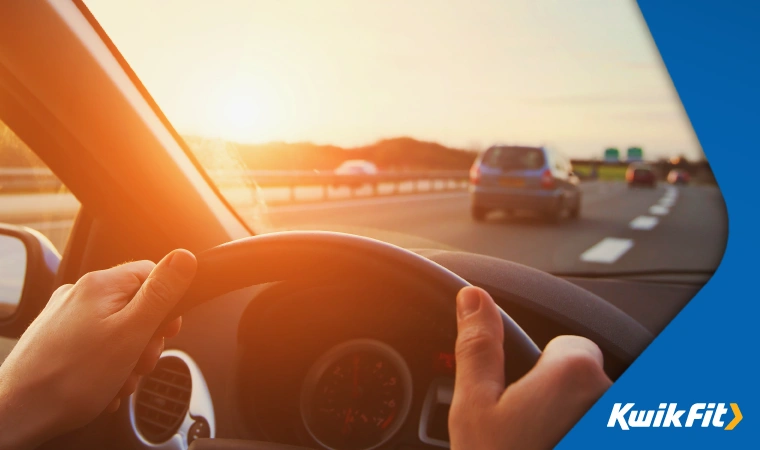
With estimations showing that up to a third of UK drivers never or rarely drive on the motorway, due to factors such as higher speeds, risk of traffic jams, or fear of accidents, itís easy to see why thereís a negative stigma. In fact, our survey found that 47% were anxious when it came to their first time driving on the motorway.
Having said that, many people actually consider motorway driving to be safer and simpler than, for example, B roads, with junctions, potholes, and roundabouts to consider.
And with 36% of new drivers using the motorway within their first month on the road, itís clear that theyíre popular. Theyíre often the best way to get around, and are practically unavoidable for longer trips, so itís good to get familiar.
Our top tips:
Keep it low stress the first time
When youíre driving on the motorway for the first time, itís a good idea to make it as easy as possible for yourself.
Make sure that youíve got no distractions (like music or chatting friends) and no particular hurry to get where youíre going.
Keep in mind that while you donít learn motorway driving in lessons, you do learn to drive on dual carriageways, so youíre practically halfway there! The same rules about pulling on, indicating, and overtaking all apply.
Bonus tip: bring some water with you for long trips!
Stay in the slow lane if you need to
While youíre still familiarising yourself with the concept, itís perfectly fine to stick to the slow lane during your first few times on the motorway. Indeed, going too slow can be dangerous, but if youíre going at around 60 miles per hour, youíll largely be fine to sit in the slow lane.
This gives you a chance to adjust to the speed of the motorway without the need to dive headfirst into constantly changing lanes.
First time: Driving down narrow country lanes
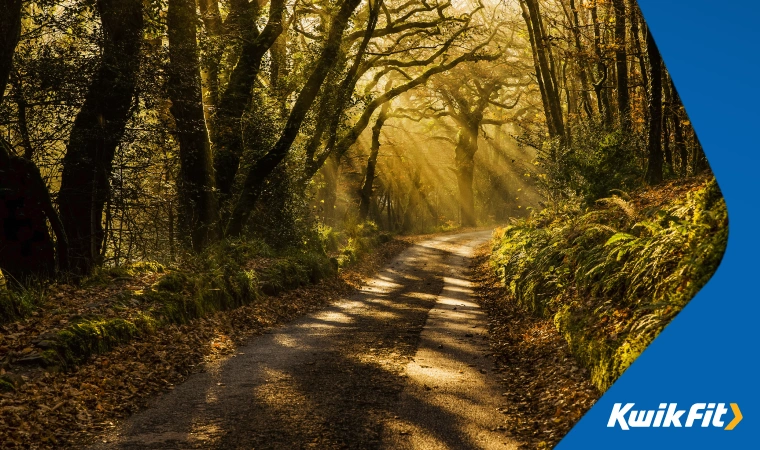
Practically the opposite of motorways, country lanes also present a unique challenge for new drivers.
According to our survey, youíre actually more likely to drive down country roads within your first month than you are on a motorway ó with 40% of those surveyed experiencing this within their first month of driving (compared to 36%). Clearly, itís best to get up to speed (though not too fast!) so you know what to expect.
Due to the rural nature, youíll likely encounter sharp bends, blind corners and narrow spaces, so adjusting your driving style to suit this is crucial. For example, donít overtake if you donít need to, and never overtake on a corner.
Take it slow
Practically any and all country lanes can be tackled ó but the best way to do it is slowly.
This is particularly important when approaching corners, as itís much easier to stop and pull over safely if you need to when driving slowly.
Itís all too easy to believe that the likelihood of coming across another vehicle is low. But itís crucial to remember that youíre driving there, and thereís a very real possibility that another driver might think the road is bound to be clear too.
Itís not only other drivers you need to look out for, but animals like pheasants and rabbits, as well as potholes and humps in the road.
Keep in mind that there likely wonít be road markings, so youíll need to judge the width of your car, and you may encounter some more unusual road users; from tractors and caravans to horses and cyclists. Ensure you give plenty of space, slowing as required, and anticipating whether itís best to stop in a gap to give way.
When you come across another car
If a corner is particularly sharp and you canít see round it, itís acceptable in these situations to lightly beep your horn upon approach. This may be one of the only ways to alert other possible drivers of your presence.
You should also use your full beams to help you see the road ahead clearly if youíre on an unlit road - just ensure you swap to your dipped headlights immediately if you see another vehicle approaching.
If you do come across another car, donít panic. Youíre both in the same boat and need to figure out how to pass safely ó which might not always be Ďquicklyí.
Check either side of the road to see if thereís a safe place to pull in. Itís usually a good idea to keep your two right tyres on solid ground, and you shouldnít attempt to pull into a particularly muddy spot.
Sometimes, the easiest thing to do is reverse until you reach a driveway or safe stopping point. And if the vehicle youíve come across is a cross-country vehicle and youíre in a hatchback, let them do the pulling over!
First time: With multiple passengers in your car

When youíve just passed your test, the first thing you probably want to do is head out with your friends. We donít blame you! But this can be a challenge when experiencing it for the first time.
Up until this point, itís likely that youíve only driven with two people in the car ó yourself and your driving instructor.
So how do you manage a vehicle full of passengers?
First of all, know that itís OK to tell everyone to tone it down if you need to. If youíre about to attempt a parallel park, for example, or are approaching a busy junction, itís perfectly acceptable to ask for the headspace needed to keep yourself and your passengers safe.
Itís also important to be generally aware that your car might not have quite as much power as it does when itís just you in the car. You will likely find that itís a little more sluggish on hills and when pulling away.
With 35% of new drivers experiencing a full car within their first month on the road, and 34% finding this stressful, itís best to be prepared. Predict noise, distractions, and less power than youíre used to!
First time: Using a drive-thru
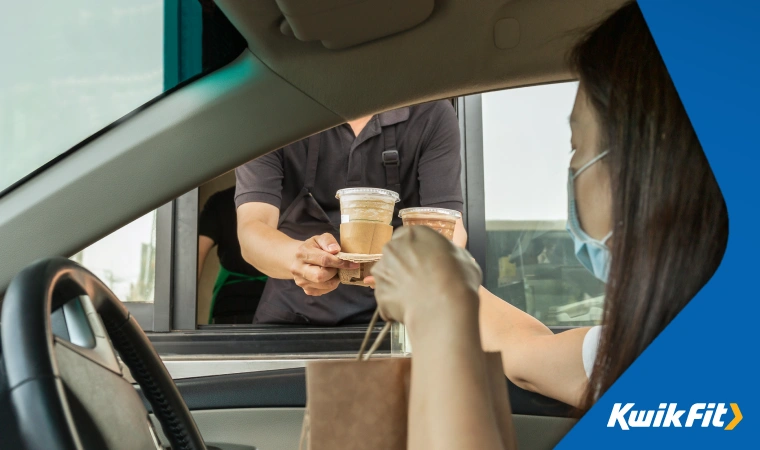
This one might seem like a minor issue when it comes to driving Ďfirstsí. But 24% of participants in our survey found their first drive-thru experience to be a stressful one.
Donít be disheartened, though ó 70% werenít stressed at all! And with a little mental prep, perhaps you wonít be either.
As with those country lanes, youíll want to take the drive-thru slowly. They often have curbs either side of the lane, so be sure to check your mirrors regularly.
- Pull up to the first station to place your order through an open window
- Youíll be asked to drive to the next window where youíll collect your order
- If thereís traffic, be sure to take it slow and maintain a good distance between you and the car in front
- Pull up to the collection window, leaving enough space that you wonít hit the building, but not so much that you canít reach the window to pay
- Once youíve paid and collected your order, drive round to park in the restaurant car park
- If at any point you get too close to the curb or building, donít be afraid to take your time and re-manoeuvre
Navigating those driving Ďfirstsí
With all of these experiences, keep this front of mind: practice makes perfect.
Even once youíve passed your test, thereís still a lot to learn on the road, but youíve already tackled the hardest part!
If youíre in need of some more advice, why not check out our blog on critical car maintenance tips for new drivers? And if parking gives you the sweats, youíll want to check out our blog filled with parking advice.
Got a problem with your car? Weíre happy to help ó head to your local Kwik Fit.
Any facts, figures and prices shown in our blog articles are correct at time of publication.
Featured Articles
Is it Illegal to Drive With One Headlight?
Saturday 19th July 2025
Wondering if itís illegal to drive with one headlight? Learn about the safety risks and penalties of illegal blown bulbs and why you should fix them promptly.
Air Con in EVs & Hybrids: Experts Answer Your Questions
Monday 30th June 2025
Does air con drain EV batteries? Can you use the air con while charging an electric car? Find out the answers to these questions & more from Kwik Fitís experts.
Why Is Your Car Making a Noise? Fixes & Tips
Friday 13th June 2025
When your car starts making unexpected noises, it can certainly be quite disconcerting; it may be nothing to worry about, but hereís what you need to know.









